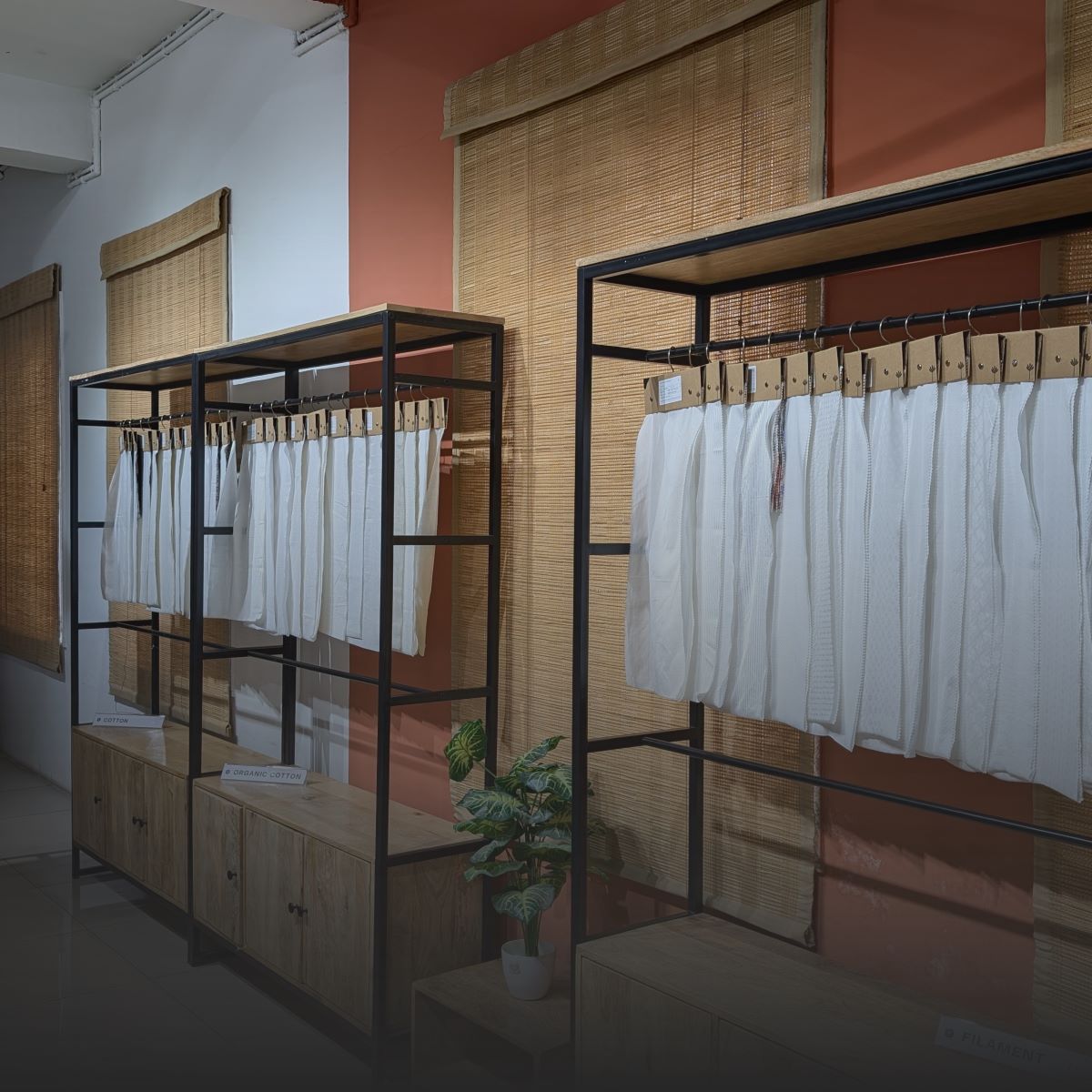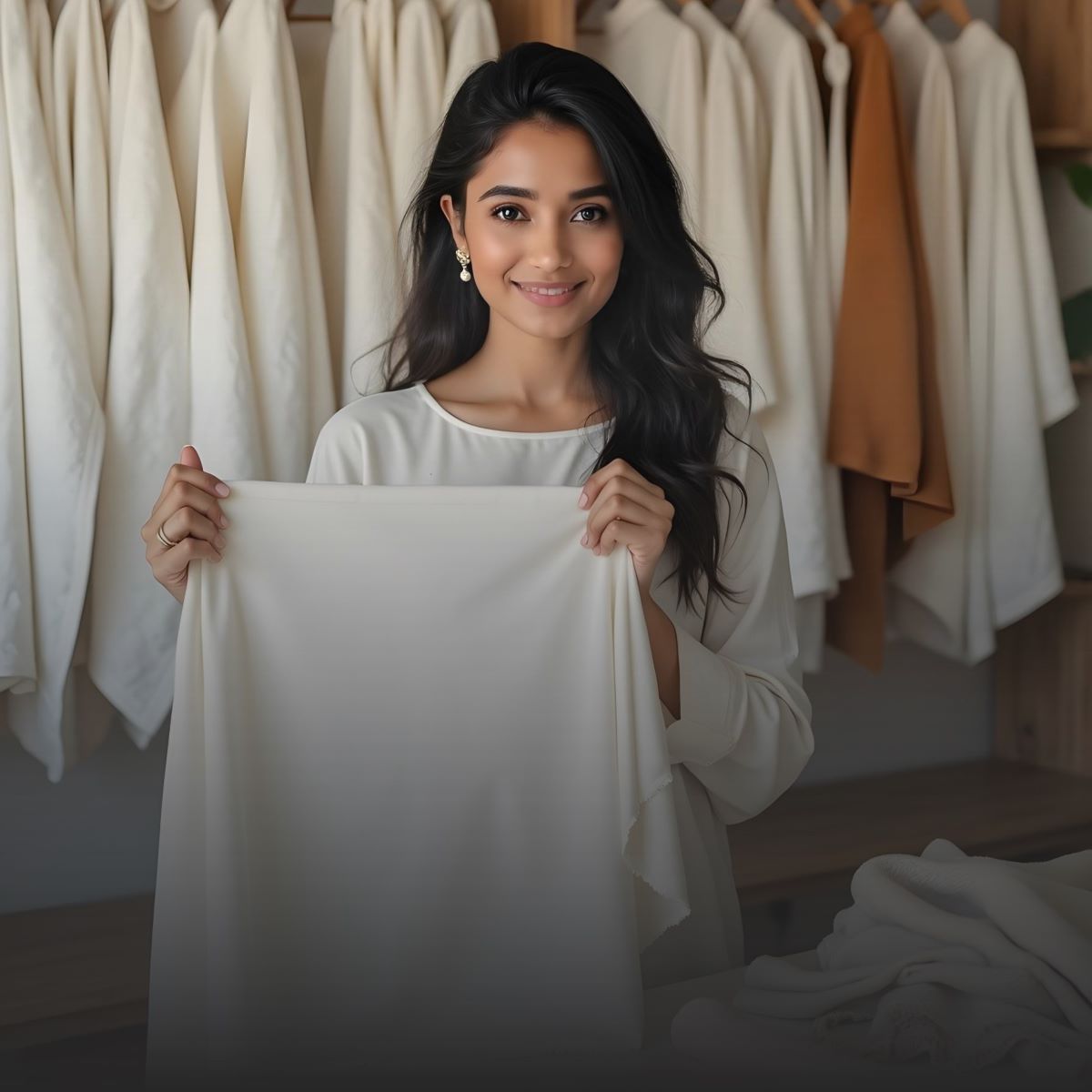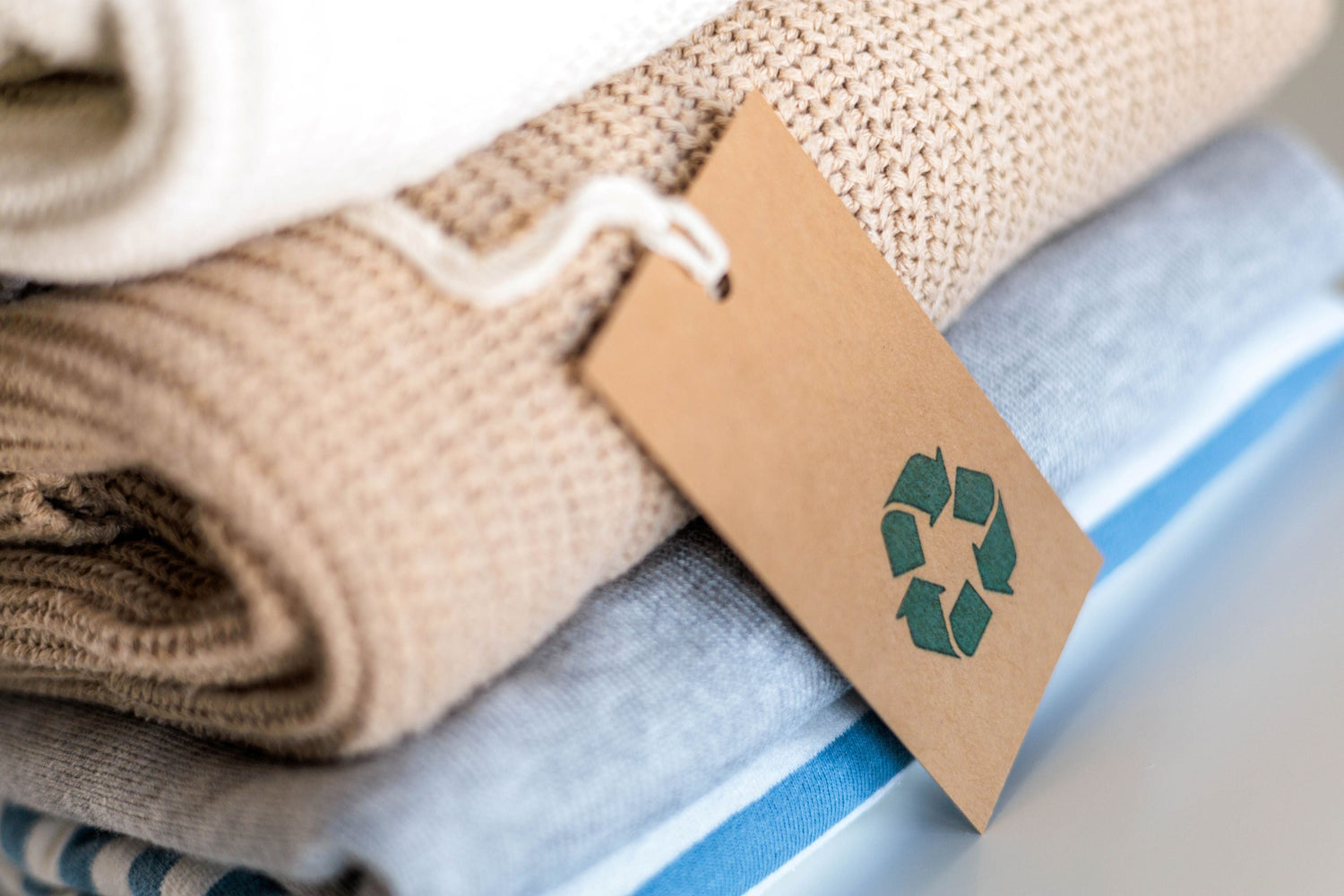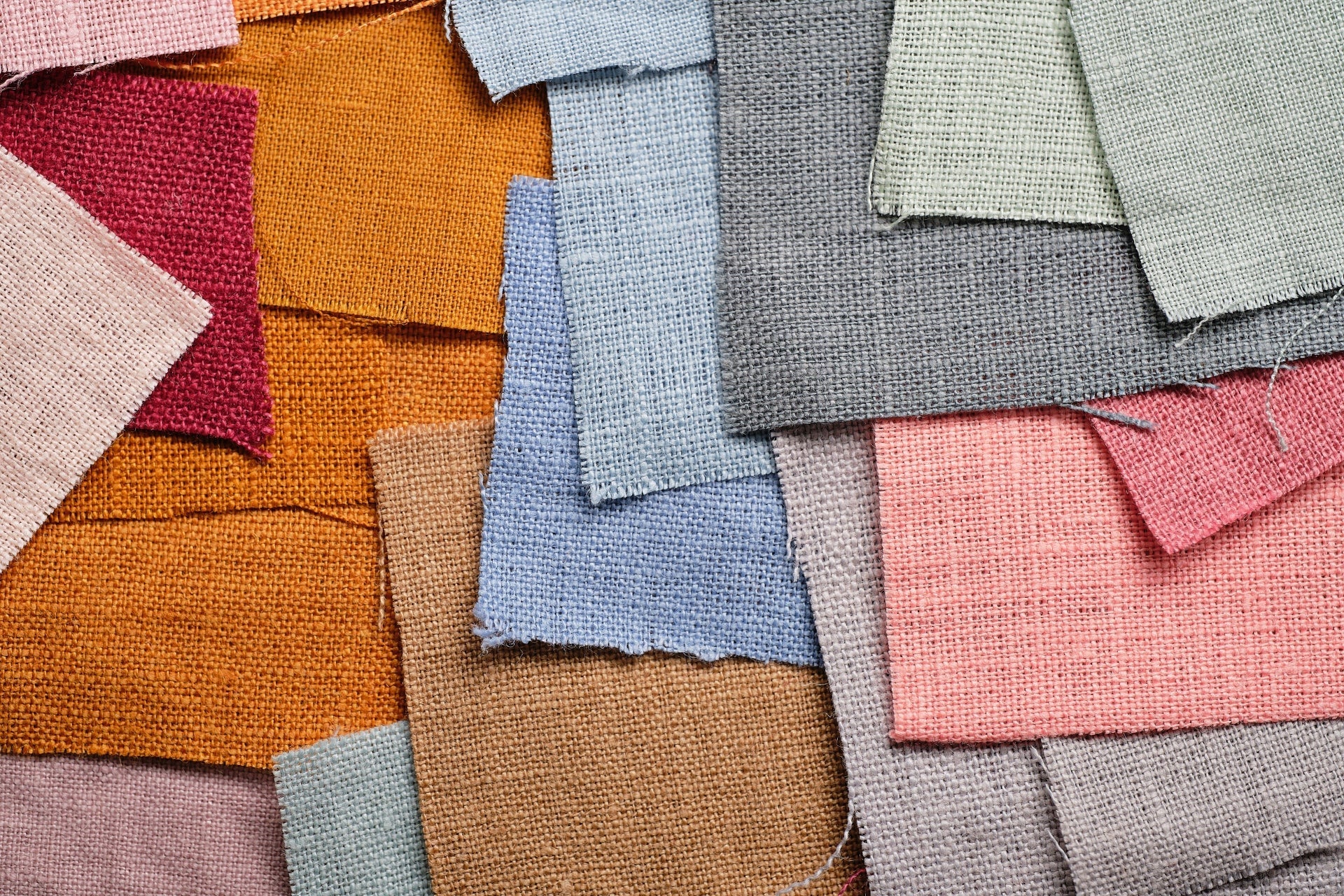With the fashion industry moving towards eco-friendly design, sustainable cellulose fabrics have become popular with ethical designers. Made from renewable plants like eucalyptus, bamboo, and beechwood, these fabrics provide a blend of luxury, breathability, biodegradability, and traceable sourcing. Building a capsule collection or an ethical label? Using TENCEL™, Modal, or Bamboo Rayon can enhance your look and meet sustainability standards.
This guide covers cellulose fabrics, their importance, design tips, and sourcing options, particularly for brands looking for sustainable fabric suppliers with low MOQs, such as Fabriclore.
What are Sustainable Cellulose Fabrics
These eco-friendly fabrics are made from the natural fibres of plants like cotton linter, bamboo, and wood. They are made in ways that are good for the environment and use less water and chemicals.
Popular Types of Cellulose Fabrics:
- TENCEL™ Lyocell – Made with eucalyptus wood that is FSC-certified and a closed-loop process.
- Modal – Because it comes from beech trees, it is known for being silky, smooth, and soft.
- Viscose/Rayon – A semi-synthetic choice that drapes well and is often used for clothes that flow.
- Bamboo Rayon – When it is carefully sourced and processed with little harm, it is considered sustainable.
These fabrics are unique because they can break down naturally and have less of an effect on the world than synthetic fibres.
Why Designers Are Choosing Cellulose Fabrics

Modern fashion brands can get a lot out of sustainable cellulose materials, including the following:
- Eco-Friendly Origins: These come from plants that can be grown again and are often handled with fewer chemicals.
- Low Carbon Footprint: A lot of them are made in closed systems that reuse chemicals and water.
- Biodegradable: It breaks down naturally at the end of its useful life, which means less trash in landfills.
- Luxurious Feel: It's smooth, airy, and soft to the touch, so it's great for both dressy and everyday wear.
-
Certifications Available: For extra trust, most high-quality cellulose fabrics have labels that say they are certified by groups like FSC®, OEKO-TEX®, and TENCELTM.
Where Cellulose Fabrics Work Best in Fashion Design
These materials can be used in many ways and are also eco-friendly. Here's how they fit into different types of design:
|
Design Type |
Suggested Cellulose Fabric |
Benefits |
|
Loungewear & Sleepwear |
Modal, TENCEL™ |
Ultra-soft, moisture-wicking, breathable |
|
Resort Wear |
Bamboo rayon, viscose |
Flowing silhouettes, easy prints, great drape |
|
Workwear & Office Fashion |
TENCEL™ blends |
Structured yet comfortable, wrinkle-resistant |
|
Casualwear & T-Shirts |
Modal, TENCEL™ |
Lightweight, soft feel, natural sheen |
|
Luxury Fashion |
Silk-modal blends, premium lyocell |
Drape + texture, easy to dye, high perceived value |
Tips To Integrate Cellulose Fabrics into Your Collection
To design with sustainable cellulose fabrics, you need to think carefully about the structure, feel, and where the fabrics come from. These useful tips will help you make these eco-friendly fabrics look great in your next collection, whether you're just making a prototype or making a lot of them.
1. Start Small with Sampling
To see how cellulose fabrics work in different patterns, start with swatches or short runs (10–50 meters). Synthetics or cotton mixes don't always drape the same way as these fabrics, so early prototyping is very important.
2. Choose the Right Silhouettes
Cellulose fabrics shine in fluid, relaxed styles. Use them for:
- Flowy dresses and kaftans.
- Wide-leg pants or palazzos.
- Soft tees and blouses.
- Resort wear and loungewear.
The way they naturally drape and feel soft goes well with simple, airy shapes.
3. Blend for Better Structure
If you need more support (like in jackets or pants), choose blended styles:
- TENCEL™ + Cotton for durability and breathability.
- Modal + Elastane for stretch and shape retention.
- Bamboo + Linen for texture and improved airflow.
4. Use Prints and Dyes Thoughtfully

Cellulose fabrics look great with both natural and digital colours. Think about:
- Earth-toned or plant-based dyes for eco collections.
- Digital printing for precise, custom patterns.
- Block or screen prints for artisanal appeal.
Providers should offer pre-treated (RFD) or PFD bases.
5. Highlight Certifications
Choose fabric from companies that are approved by OEKO-TEX®, GOTS, TENCELTM, or FSC®. These give your claims about sustainability more weight and calm environmentally conscious customers.
6. Make It Part of Your Story
Being eco-friendly is more than just a fabric choice; it's a way to represent your brand. Draw attention to how cotton fabrics are used in
- Product descriptions.
- Hang tags or packaging.
- Social media and email campaigns.
- Lookbook narratives.
This makes eco-conscious buyers believe you and feel connected to your business.
7. Source from Ethical Partners
Pick providers that offer low minimum orders, shipping all over the world, and full customization. As an example, Fabriclore gives you:
- Custom printing on TENCEL™, modal, and viscose.
- Orders start from just 10 meters.
- Sampling, lab testing, and swatch support.
- Certifications for compliance and traceability.
Where To Source Sustainable Cellulose Fabrics
Textiles made from sustainable cellulose fabrics (TENCEL™, modal, viscose, and bamboo) are quickly becoming the material of choice for makers who care about both ethics and style. But it can be hard to find them regularly, cheaply, and in the right amounts. Here is a list of reliable sites and suppliers that offer certified low-impact cellulose textiles.
1. Fabriclore (India) – Trusted Wholesale Sustainable Fabric Supplier for the USA
This is the best place in the USA for fashion startups, D2C brands, and sustainable labels to find low-MOQ, certified sustainable fabrics. They have a lot of eco-friendly materials to choose from, let you make any changes you want, and ship worldwide with confidence.
A. Sustainable Fabric Range
Fabriclore's range has a lot of different FSC-certified, OEKO-TEX®, and GOTS-certified materials:
- TENCEL™ Lyocell & Modal – FSC eucalyptus and beech variants with closed-loop processing.
- LIVA™ and Bamboo Rayon – Soft, plant-based fabrics for flow and comfort.
- Organic Cotton, Hemp, Bemberg™ Cupro, and recycled fibre blends.
You can use these fabrics for casual wear, resort lines, luxury garments, and wholesale fabric by the yard.

B. Customization & Print Expertise
Fabriclore has been in business for more than ten years and helps with:
- Hand-block printing for artisanal pieces
- Screen printing for mid-batch production
- Digital printing for precise, small-batch runs.
Fabriclore has low minimums and full design help so that you can get made-to-order fabrics or ready-stock fabrics.
C. USA Delivery & Support
- Global logistics with door-to-door shipping to the USA.
- Complete compliance documentation for CBP/FTC import
- Swatch services and pre-production sampling to ensure quality
- Transparent lead times and seamless customer support
D. Why Choose Fabriclore?
- Low MOQ starting at just 10 meters.
- Competitive pricing via integrated mill-level supply chain.
- Full spec transparency: count, weave, grams per meter (GSM), etc.
- Trusted by 400+ brands for ethical, traceable, high-quality sourcing in the USA.
Fabriclore gives your production the power to use eco-friendly materials and be artistic, whether you're looking for wholesale fabric online or a low MOQ clothing manufacturer USA.
🔗 Discover the world of sustainable fabrics with Fabriclore's exclusive collection!
2. Lenzing™ (Austria) – The Original Cellulose Innovator
Lenzing is a company that makes cellulose fibres with brands such as:
- TENCEL™ Lyocell
- TENCEL™ Modal
- EcoVero™
They don't sell to designers directly, but they do have a list of approved mills and resellers around the world. Perfect for brands that want quality fibre content that can be tracked and has a history of being environmentally friendly.
3. SwatchOn (South Korea) – Trend-Forward, Swatch-Based Sourcing
SwatchOn offers:
- A large selection of cellulose blends (modal, rayon, bamboo).
- Real-time swatching and sampling.
- Low MOQs (1–5 yards in some cases).
- Designer-focused filters for trends, colours, and fabric types.
Good for brands that follow trends and keep an eye on new markets and high-end fabrics.
4. Simplifi Fabric (Canada) – Organic & Zero-Waste Focus
Simplify stocks:
- Organic bamboo knits and wovens
- TENCEL™ blends
- Cotton-modal options
This is a great option for North American brands that want to buy from local sellers and cut down on shipping emissions.

5. Queen of Raw (USA) – Deadstock & Circular Cellulose Fabrics
If you're exploring the circular economy angle, Queen of Raw is ideal:
- Offers surplus and deadstock cellulose fabrics
- Helps reduce overproduction waste
- Includes designer-specific inventory like viscose crepe, bamboo silk, etc.
Ideal for eco-friendly makers who make small, one-of-a-kind items.
What To Look for In a Cellulose Fabric Supplier
Picking the right cellulose fabric supplier is key to maintaining quality, consistency, and sustainability in your fashion production. When sourcing for a small line or building a sustainable brand, choose a supplier that provides certified materials, flexibility, transparency, and global support. Consider these key criteria when evaluating a sustainable fabric supplier:
|
Criteria |
Why It Matters |
|
✅ Certifications |
Look for GOTS, OEKO-TEX®, FSC®, or TENCEL™ to validate eco-fiber authenticity. |
|
✅ Low MOQs |
Key for small runs, sampling, or testing silhouettes without overspending. |
|
✅ Customization |
The ability to request specific GSM, weave, dyeing, or digital print work. |
|
✅ Sourcing Support |
Ensure availability of swatches, lab testing, documentation, and pre-treatment. |
|
✅ Global Logistics |
Suppliers must support seamless international delivery with all required paperwork. |
Fabriclore calls itself a leading wholesale fabric supplier for cellulose fabrics because it meets all of these standards. Fabriclore ensures a compliant, creative, and cost-effective sourcing experience for modern fashion brands with low MOQs starting at just 10 meters, the ability to print on demand, and global shipping, including to the USA, Europe, and the Middle East.
Final Thoughts
Sustainable cellulose fabrics have evolved beyond being merely an eco-friendly option; they are now seen as the foundation of responsible fashion design. Materials such as TENCEL™, Modal, and Bamboo Rayon offer a soft feel and elegant flow while also making a positive environmental impact, enabling brands to combine beauty with responsibility. Designers worldwide, from luxury fashion houses to emerging D2C brands, are selecting these fabrics to satisfy consumer needs for transparency, traceability, and comfort.
Partnering with ethical suppliers such as Fabriclore allows you to access certified fabrics, global shipping, and low MOQs, enabling you to innovate responsibly. Sustainable design isn't just a style; it's good for businesses in the long run, and cellulose fabrics are a big part of it.
FAQ’s
1. What Are The Most Sustainable Cellulose Fabrics For Clothing Brands?
TENCEL™ Lyocell, Modal, Bamboo Rayon, and EcoVero™ are some of the most eco-friendly cellulose materials that fashion brands can use. These fibres are made from plant materials that can be used again and again, and they are treated using low-impact, closed-loop technologies. For example, TENCELTM comes from wood that is FSC-certified and is very soft, breathable, and biodegradable, which makes it perfect for both high-end and everyday clothing.
2. How do cellulose fabrics compare to synthetic materials in fashion design?
When it comes to environmental impact, comfort, and biodegradability, cellulose fabrics are better than synthetic materials like polyester. Synthetics are made from petroleum and don't break down naturally, but cellulose fibres do. They also let more air in, get rid of sweat and are good for people who care about the environment. Because of this, designers who want to make sustainable fashion collections like to use them.
3. Can I custom print on TENCEL™, Modal, or Bamboo fabrics?
Yes, cellulose fabrics like TENCEL™, Modal, and Bamboo Rayon work very well with digital, screen, and hand-block printing. For better colour absorption, these materials come in two different types: RFD (Ready for Dyeing) and PFD (Prepared for Dyeing). Custom-printed cellulose fabrics with low minimum order quantities and full design support are available from suppliers like Fabriclore. This makes them perfect for creating personalized or branded clothing.
4. Where can I buy sustainable cellulose fabrics in small quantities?
Sites like Fabriclore are great if you want to buy sustainable cellulose fabrics in low MOQ. Fabriclore has approved eco-friendly fabrics like TENCEL™, Modal, and Bamboo Rayon, and you can place an order as little as 10 meters in advance. Their swatch and sample services also make it simple for new and small brands to try fabrics before making a lot of them.
5. Are cellulose fabrics suitable for all types of fashion garments?
Yes, sustainable cellulose materials are very versatile and look good on a wide range of clothes, such as resort wear and luxury fashion to loungewear, office clothing, and casual t-shirts. Because they naturally drape, are soft, and can hold dyes, they are great for both simple and flowy patterns. Clothes that are mixed with cotton, elastane, or linen can also give pants, coats, and other fitted clothes more structure.




